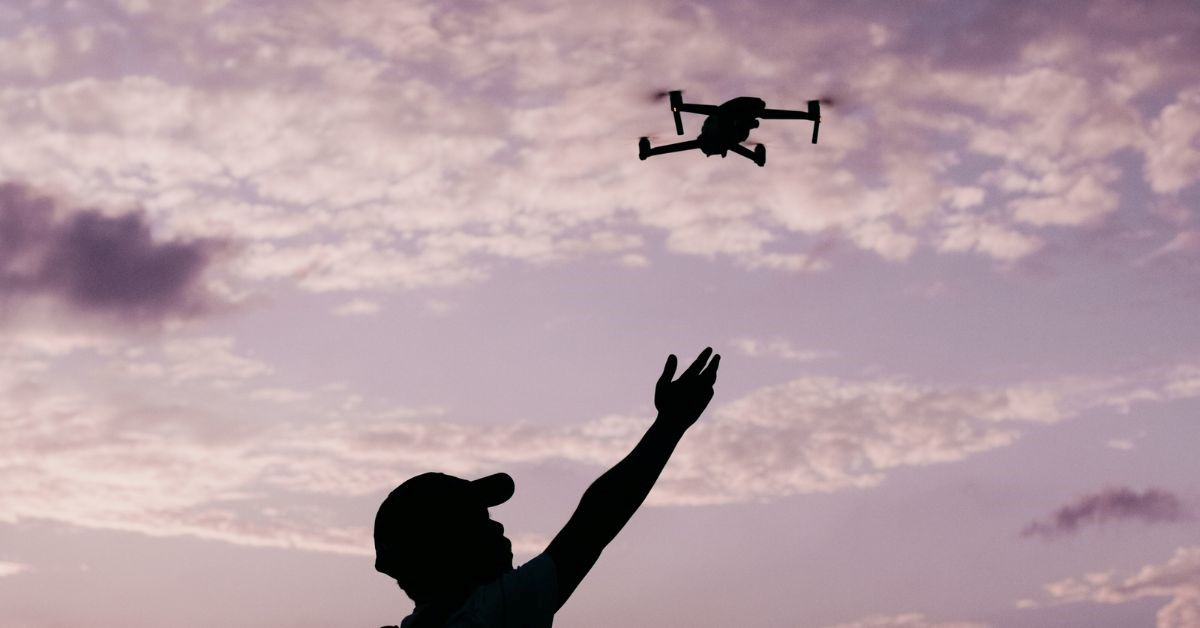Leading Commercial UAVs for Professional Use

The rising trend of commercial drones has made many things possible beyond the standards that we can imagine right now. Because these unmanned aerial vehicles (UAVs) are not only constrained to delivery services or drone photography. Today, drones are changing what industries should only be because, with drones, they are pushing boundaries that have never been done before.
In this article, let’s immerse ourselves in many ways that these drones change how the world works.
Commercial Drones in Public Safety and Emergency Response
As much as UAVs are changing the scene in industries, there are many ways these commercial drones are helping in public safety and emergency response such as:
- Commercial drones with camera capabilities provide real-time situational awareness for first responders
- Thermal imaging drones assist in search and rescue operations, locating missing persons and survivors
- Large commercial drones deliver emergency supplies and medical equipment to disaster-stricken areas
- Drones aid in crowd control and traffic management during large-scale events
Urban Planning and Development
Aside from public safety and emergency response, drones also help in urban planning and development. They have features like:
- UAVs create 3D maps of urban areas, providing valuable data for infrastructure planning
- Aerial surveys assist in monitoring construction progress and identifying potential safety hazards
- Drones help assess the impact of urban development on the environment
- Best Commercial Drones 2025 will offer advanced data processing capabilities for urban analytics
Scientific Research and Exploration
The need for safety in doing scientific research and exploration is necessary, just like what happened when the world experienced the COVID-19 pandemic. Drones can prevent human exposure to dangerous areas because they have features like:
- Commercial drones with specialized sensors collect data in remote or hazardous environments
- Drones assist in wildlife population studies and habitat monitoring
- Oceanographic research utilizes drones for mapping coastlines and studying marine life
- Commercial drones for sale cater to researchers with options for customized payloads and sensor integration
Creative Expression and Art Innovation with Drones
As we watch movies in cinemas or at home, we often witness amazing cinematography with scenes that is being captured in the skies. Those are captured by drones. Here are more features of drones used in creative expressions:
- Filmmakers and photographers use commercial drones with camera systems to capture stunning aerial footage
- Artists explore new forms of visual storytelling through drone-based installations and performances
- Best commercial drones in 2025 offer advanced cinematography features for capturing unique perspectives
- Drone light shows create spectacular visual displays for entertainment and events
Agriculture and Precision Farming
UAVs have become relevant and necessary tools for modern agriculture because it offers different capabilities that improve efficiency and optimize crop yields.
- Crop monitoring: Commercial drones with camera systems capture multispectral imagery, providing valuable data on plant health, stress levels, and potential disease outbreaks.
- Precision spraying: These spraying drones are fitted with a special application system that can deliver fertilizer, pesticides, and herbicides to their respective applications. This system will decrease waste and will not cause that many environmental problems.
- Irrigation management: The use of a commercial drone featuring heat sensors to find wet areas today makes it much easier to schedule irrigation and conserve water by applying adequate pressure where needed.
Environmental Impact
Although drones give us a lot of positive environmental opportunities, like enabling an efficient delivery system and helping with conservation efforts, we should also study the consequences that they might be causing. Noise pollution is an urban environmental issue that should be considered when implementing technological advancements and working out operational guides. Also, the aerial drones’ energy use combined with the dumping of batteries makes it necessary to replace them in an environment-friendly way.
Logistics and Delivery
The regular operations of the delivery sector are witnessing remarkable growth due to the rise of business drones.
- Last-Mile Delivery: On the market, you can find drones that are specially designed for package-carrying and delivering to residences and businesses, thus ensuring faster delivery in a moment’s time.
- Warehouse Management: UAVs are employed with data scanners for inventory count and flow control, which improves stock monitoring and reduces warehouse time.
- Medical Deliveries: In the Best Commercial Drones 2025, temperature control systems are designed to provide the utmost cold supply of medical supplies, organs, and blood samples also for remote areas will most likely be included
Regulatory Landscape and Airspace Management
The tremendous and fast accumulation of drone industries has proved to be a striking problem for regulatory bodies in creating all-around and adaptive regulations. Integration with the existing air traffic control systems and airspace management could be real challenges. Using personal flying devices for air travel could significantly transform our current aviation landscape.
Achieving the balance between facilitating the growth of innovation and guaranteeing safety should be the work of all the stakeholders – regulators, industry representatives, airline organizations, and airspace control. Not only that, international norms must be synchronized in order to have nonstop drone operations across borders as well as to meet the growth of the entire industry on a global scale.
Education and Training
UAVs enable learners to receive not only a wide range of training from assorted fields or disciplines in their education but also the chance to obtain practical working opportunities. These include:
- STEM Education: A student gets a chance to participate in practical learning processes, which include the construction and installation of drones, to see engineering and aerodynamics principles in action while in the process, he/she learns how to code.
- Vocational Training: The curricula of commercial drone pilot training programs lead to employment in multiple fields of work like contest, inspection, and graphics.
Public-Safety Training: The first responders are looking to successfully put the commercial drones to use in simulated scenarios for both the preparedness and command responses.
Public Perception and Acceptance
The complete appropriation of drones by the business sector needs the essential public approval and understanding of the technology. Ensuring increased security, privacy, and soundness will build trust and a positive picture from the perspective of the community. Through education schemes that tackle misperceptions of drone technology and community involvement programs made to show the benefits, there will be a path toward acceptance and finally integration into society.
Through UAVs, we are able to witness how the area of our lives is reshaping, offering solutions to such problems that only existed in our imagination before. Through being proactive, responsibly innovating, and exploiting the cutting edge, we will have foreseen the pitfalls and leveraged the very best potential of this pivotal technology to a world that will be safer, more efficient, and more sustainable.
Safety and Security Concerns
One of the concerns regarding the operation of UAVs is its potential risk for technical accidents and collisions. There is a need to ensure the safety of airspace and mitigating the risk of drone accidents and the like can strengthen policies, regulations, which benefits technological advancements in the long run.
These are the three measures to be taken to ensure proper safety and use:
- Creating geofencing systems
- Building an effective detect-and-avoid tech
- Establishing rules for drone use in urban areas
Furthermore, UAVs also depend on cyberspace, which many people use that might have become victims of cyber-attacks, therefore, there is a need to make cybersecurity concrete and robust, and necessary features to safeguard sensitive data and prevent unauthorized access.
The Impact of UAVs on the Job Market
The rise of commercial drones has stimulated a discussion about the feasible future for the new generation of workers. Job displacements are one of the drawbacks of adopting drone technology in some of the sectors. On another note, this is also an opening for creating new employment opportunities and bringing about transformation in the roles that are already in place.
Job Creation
The commercial drone industry is generating new jobs in various fields, including:
- Drone Operation and Piloting: Certified and compliant drone pilots are in great demand among different industry sectors for performing such tasks as remote piloting and photography.
- Data Analysis and Software Development: The data gathered by commercial drones requires a skilled person to analyze, employ knowledge in it, and develop software for different usages.
- Maintenance and Repair: Technicians who are knowledgeable in the electronic and mechanical areas are required for the setup and repairs of commercial drones that need to be maintained safely and reliably for operation.
Job Transformation
Even though these drones are one of the drivers of job creation, they are also one of the factors that are transforming jobs by automating tasks and improving efficiency, safety, and drone technology.
- Inspection and Maintenance: Drones commercialized with high-defined cameras and sensors allow regulators to perform comprehensive inspections of infrastructures such as wire bridges, power lines, and pipelines without subjecting workers to danger.
- Surveying and Mapping: Given their capability to quickly and precisely fly above wide areas, commercial drones speed up surveying and speed up the of physically doing it, which otherwise takes a longer time.
- Agriculture: The use of commercial drones with spraying systems, which allow automation of pesticides and fertilizer application, eliminates the workers’ costs and this also decreases the environmental impact.
International Collaboration
International cooperation is very important for unified principles of safety and security and to ensure the smooth entry of drones into another border. Similar to the International Civil Aviation Organization (ICAO), which aims to develop universal standards for the business of drones, organizations are in a position to do so.
Bottom Line
The economic drone industry alone has the potential for further expansion, thus becoming popular not only in the sector in which it was initially marketed but also changing the whole lifestyle and the way we function. We can tap into the power of commercial drones that can enhance business practices, as well as facilitate other diverse areas, by progressively embracing responsible development and addressing challenges. Consequently, we shall convert drones into a significant component in constructing a better world.
Contact Us
Thank you for your message. It has been sent.
Latest Posts
Social Profiles















